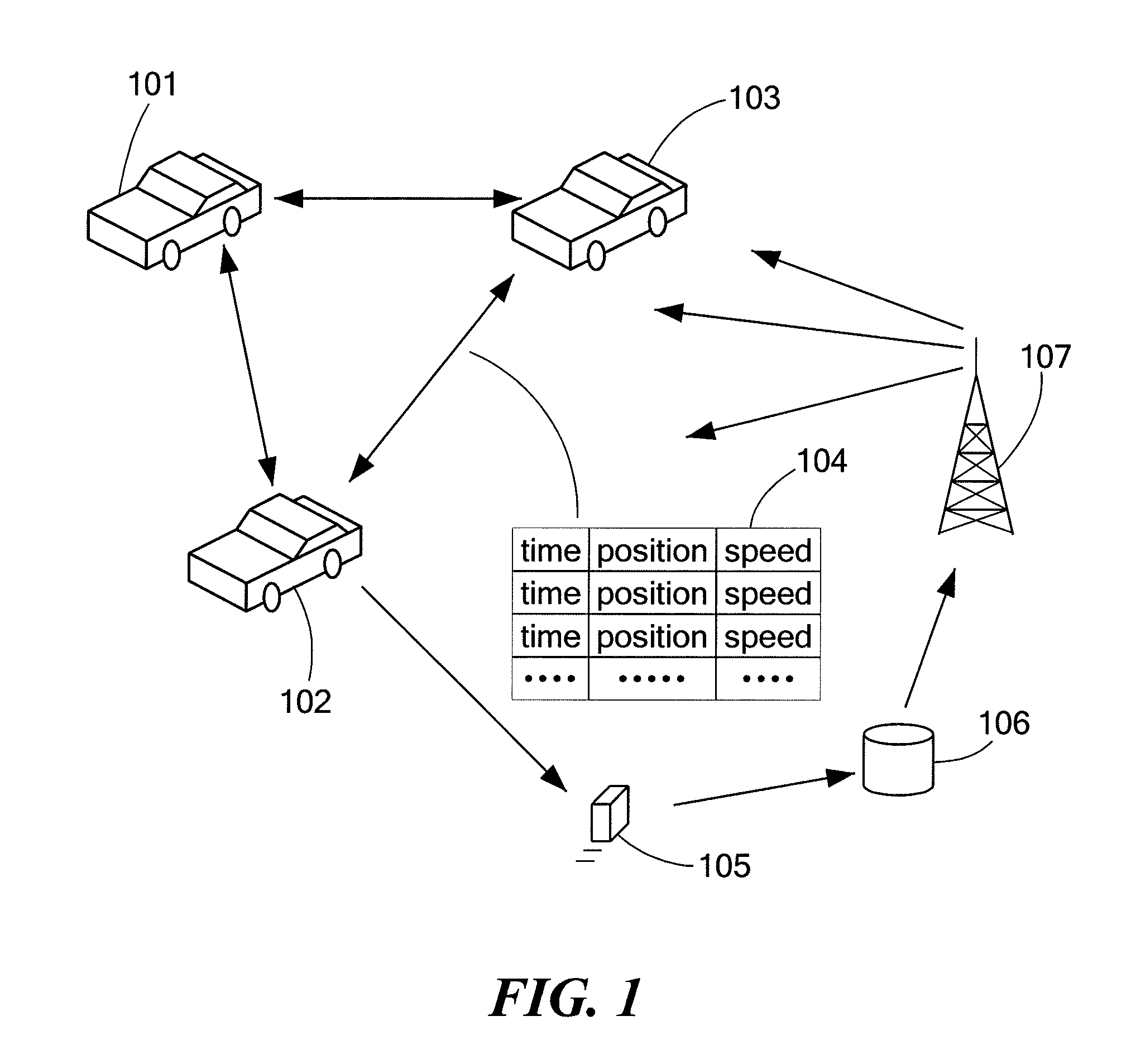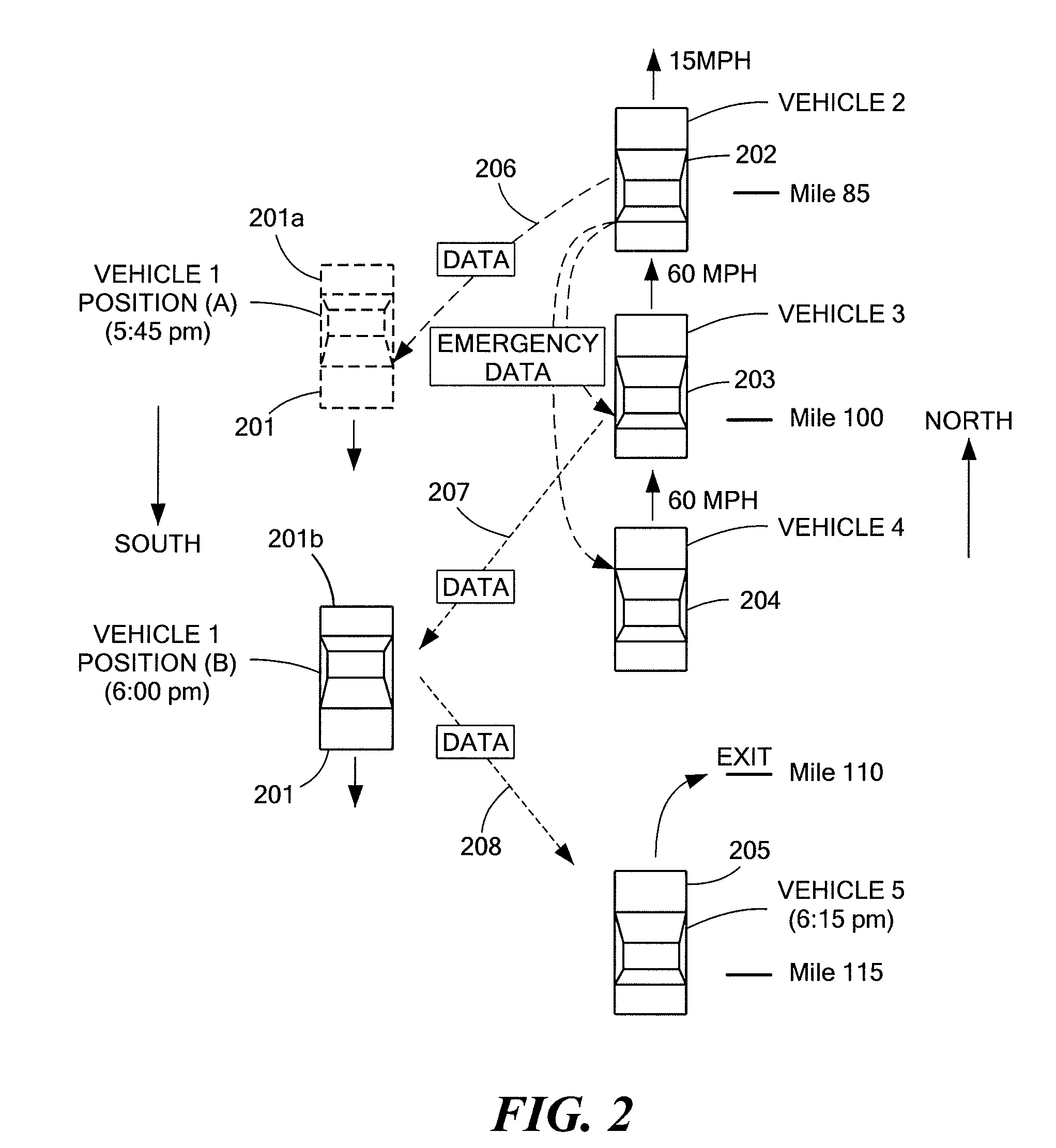Network Providing Vehicles with Improved Traffic Status Information
a technology for traffic status information and networked vehicles, applied in the direction of variable traffic instructions, road vehicle traffic control, instruments, etc., can solve the problems of significant lag time between, reduce roadway throughput, rear end collisions, etc., and achieve the effect of increasing vehicle spacing and rapid dissemination of traffic information
- Summary
- Abstract
- Description
- Claims
- Application Information
AI Technical Summary
Benefits of technology
Problems solved by technology
Method used
Image
Examples
Embodiment Construction
[0028]The entire disclosure of U.S. Provisional Application No. 61 / 146,714, filed Jan. 23, 2009 is hereby incorporated herein by reference.
[0029]Personal navigation devices (PNDs) have become widely used in automobiles due to their practical advantages and relatively low cost, for example. PNDs are typically able to communicate through a number of different channels or networks to exchange data and present navigation information to a driver. PNDs are typically equipped with a global positioning systems (GPS) to obtain location and route information for presentation to a driver. A number of PNDs also offer real time traffic information broadcasts to warn drivers of localized slowdowns or traffic jams, and potentially suggest detour routes to avoid traffic congestion.
[0030]Some of the data presented through various types of PNDs may be derived from systems that can include roadside sensors, wire loops in roadway pavement, roadway toll information, aircraft observation or data from veh...
PUM
 Login to View More
Login to View More Abstract
Description
Claims
Application Information
 Login to View More
Login to View More - R&D
- Intellectual Property
- Life Sciences
- Materials
- Tech Scout
- Unparalleled Data Quality
- Higher Quality Content
- 60% Fewer Hallucinations
Browse by: Latest US Patents, China's latest patents, Technical Efficacy Thesaurus, Application Domain, Technology Topic, Popular Technical Reports.
© 2025 PatSnap. All rights reserved.Legal|Privacy policy|Modern Slavery Act Transparency Statement|Sitemap|About US| Contact US: help@patsnap.com



